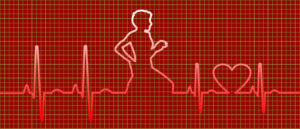
A pacemaker, often referred to as a “battery,” is also known as a cardiac pacemaker or heart stimulator.
Suggested Reading: The electrical system of the heart
An increasingly compact device
This electronic device, powered by a battery, is remarkably small. Today, it is roughly the size of a two-dollar coin, albeit slightly thicker. Once implanted, it is typically positioned under the skin, just below the left collarbone.
Thanks to technological advancements, modern pacemakers are not only smaller but also more efficient, providing tailored solutions to meet the specific needs of patients.

When Is a Pacemaker Needed?
A pacemaker is indicated when rhythm disorders due to certain cardiac conduction blocks compromise the heart’s normal function. The primary situations requiring its implantation include:
- Sinoatrial Node Disease (Natural Pacemaker): This occurs when the heart’s natural control center functions abnormally, causing excessive slowing of the heart rate or prolonged pauses.
- Atrioventricular Block: This condition arises when the atrioventricular node, the sole pathway for electrical signals between the atriaThe atria are the two upper chambers of the heart. They act as reservoirs for blood that will fill the ventricles. and ventricles, malfunctions, leading to slowed or completely blocked signal transmission.
- Unexplained Syncope with Severe Injuries: In older individuals, an unexplained loss of consciousness resulting in significant injuries may warrant a pacemaker to prevent future dangerous episodes.
- Atrial Fibrillation with Bradycardia: In cases where the heart rate becomes too slow, or when medications used to control the heart rate cause an excessively reduced rhythm, a pacemaker can be implanted to stabilize the heart rate.
- Heart Failure with Reduced Ejection Fraction and Conduction Disorder: For patients with heart failure and conduction disorders, such as bundle branch blocks, coupled with a reduced ejection fraction, a pacemaker may be necessary to synchronize ventricular contractions and enhance efficiency.
These indications are assessed by a cardiologist, who determines whether a pacemaker is the best solution based on the patient’s condition and associated symptoms.
Suggested Reading: Rhythm Disorders
A Simple Procedure
The implantation of a pacemaker is a quick surgical procedure, typically completed in just a few minutes.
It does not require general anesthesia. Instead, a local anesthetic is used to numb the area around the implantation site, combined with light sedation to ensure the patient’s comfort throughout the procedure.
Suggested Reading: Pacemaker Implantation

A Case and Electrical Leads
The pacemaker consists of a case and one, two, or sometimes three electrical wires, known as leads or electrodes.
The case, which contains a battery and an electronic circuit, generates an electrical impulse designed to stimulate the heart’s contraction.

How a Pacemaker Works
The operation of a pacemaker can be compared to that of a household thermostat. When the temperature falls below the desired level, the thermostat activates the heating system. Once the target temperature is reached or exceeded, it shuts off and enters standby mode.
Similarly, the pacemaker is programmed to maintain a target heart rate. As long as the heart’s natural rhythm stays above the preset threshold, the device remains inactive. However, if the heart rate drops below this limit, the pacemaker automatically activates to stimulate the heart and maintain a steady, efficient rhythm.
This precise and intelligent mechanism compensates for rhythm disorders, ensuring that the heart functions optimally under all circumstances.

Différents Types de Pacemaker
The type of pacemaker and the number of electrodes, or leads, required depend on the evaluation by the healthcare professional overseeing the implantation. These leads are typically positioned in one or two chambers of the right side of the heart for easier access.
- Dual-Chamber Pacemaker
A dual-chamber pacemaker includes two leads connected to the device.
These leads are positioned in two heart chambers: the right atrium and the right ventricle. This setup allows for coordination between the contractions of the two chambers, optimizing the heart’s filling and bloodBlood is composed of red blood cells, white blood cells, platelets, and plasma. Red blood cells are responsible for transporting oxygen and carbon dioxide. White blood cells make up our immune defense system. Platelets contribute to blood ejection functions.
- Biventricular Pacemaker (Bi-V)
A biventricular pacemaker, commonly used in patients with heart failure and reduced ejection fraction, is equipped with three leads.
*Indication: These patients often have an enlarged heart and abnormal electrical conduction in the ventricles, leading to desynchronization between the two ventricles’ contractions, which worsens cardiac function.
These electrodes are positioned in two cardiac chambers as follows:
- One lead is positioned in the right atrium.
- A second is placed in the right ventricle.
- A third is placed on the left ventricle, inserted via a large heart vein called the coronary sinus.
This specific configuration helps resynchronize the contractions of the two ventricles, improving cardiac function and the quality of life for affected patients.
How a Pacemaker Works
Dual-chamber pacemakers are the most commonly implanted devices, and their functionality relies on precise interaction between the electrodes and the pacemaker unit.
- Collecting and Transmitting Information
The electrodes placed in the right atrium and right ventricle continuously record the heart’s electrical activity and transmit this information to the pacemaker unit.
- Delivering Electrical Impulses When Needed
When the pacemaker detects a lack of natural electrical activity in the atriaThe atria are the two upper chambers of the heart. They act as reservoirs for blood that will fill the ventricles., it generates an electrical impulse through the atrial electrode.
This impulse stimulates the atriaThe atria are the two upper chambers of the heart. They act as reservoirs for blood that will fill the ventricles. to contract, and the resulting electrical activity is expected to propagate naturally to the ventricles.
If this activity does not travel to the ventricles, the pacemaker sends a second impulse through the ventricular electrode to directly stimulate the ventricles.
The pacemaker is programmed to maintain a precise delay between these two impulses, allowing the heart an opportunity to generate its own activity before intervention.

Diverses Configurations Possibles
The pacemaker can adapt in real time to the patient’s needs, functioning under different scenarios:
- Scenario 1: Absence of Atrial and Ventricular Activity
- The pacemaker sends an initial impulse to the atriaThe atria are the two upper chambers of the heart. They act as reservoirs for blood that will fill the ventricles..
- If no ventricular activity is detected, a second impulse is sent via the ventricular electrode.
- Scenario 2: Normal Atrial Activity with Normal Transmission to Ventricles
- The pacemaker detects atrial activity through the right atrial electrode.
- The activity naturally transmits to the ventricles, and no additional impulse is required.
- Scenario 3: Normal Atrial Activity but No Ventricular Transmission
- The pacemaker senses atrial activity through the atrial electrode.
- If no ventricular activity is detected, the pacemaker delivers an electrical impulse to the right ventricle to stimulate its contraction.
Constant adjustment
This adaptive capability enables the pacemaker to synchronize seamlessly with the heart’s natural electrical activity, intervening only when necessary to ensure a stable and effective heart rhythm.
A Small Computer Under the Skin
A pacemaker can be compared to a sophisticated miniature computer placed under the skin. Its primary mission is to ensure the heart beats regularly and efficiently.
It continuously detects the electrical signals generated by the heart. Like a GPS, it monitors the trajectory of electrical impulses through the various components of the cardiac electrical system. The pacemaker then analyzes this information to check if the natural system is functioning correctly.
The pacemaker does not replace the heart’s natural electrical system; rather, it complements it. It acts as a reliable assistant, ready to intervene only when necessary.
Thanks to its advanced technology, this “mini-computer” ensures your heart maintains a stable rhythm while preserving its natural function as much as possible.

Battery Life
The longevity of a pacemaker’s battery depends on its usage.
In cases where the pacemaker frequently supports the heart’s rhythm, the battery typically lasts around 10 years. If the device is used less often, its lifespan can be extended.

Regular Pacemaker Check-Ups
To ensure optimal functioning, pacemakers undergo regular check-ups, typically once or twice a year. These evaluations can be conducted in two ways:
- Remote Monitoring: Using a wireless connection (Wi-Fi), the pacemaker transmits data directly to a specialized clinic for analysis.
- In-Person Appointments: During a visit to a specialized clinic, a healthcare professional evaluates the device’s performance and checks the battery’s status.
These follow-ups confirm that the battery remains efficient and all components of the pacemaker are operating as intended, ensuring continuous and safe management.
Suggested Reading: Pacemaker Clinic



























